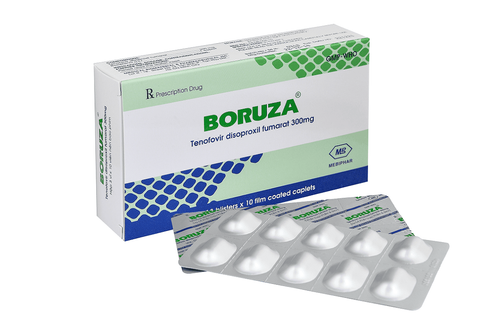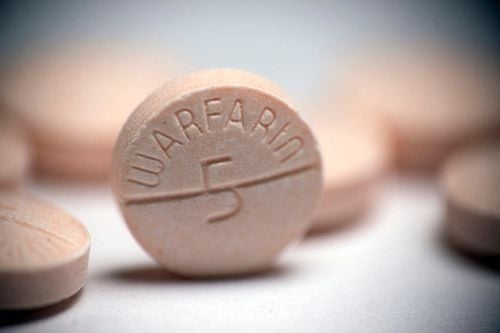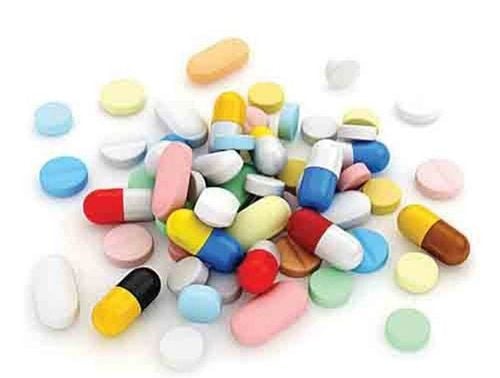This is an automatically translated article.
Raxnazole drug is made in the form of hard capsules, the main ingredient is Itraconazole. The drug is used to treat parasitic, bacterial, viral, fungal infections,...
1. Uses of the drug Raxnazole
What is Raxnazole ? The active ingredient is Itraconazole 100mg. Itraconazole is an oral antifungal drug, which is a triazole derivative with a broad spectrum of antifungal activity. Studies confirm that Itraconazole inhibits the growth of many pathogenic fungi in humans at concentrations ranging from 0.025 to 0.8 mcg/mL. Regarding the therapeutic mechanism, Itraconazole interferes with the synthesis of Ergosterol - an essential component of fungal cell membranes. Disturbance in the synthesis of this compound leads to the antifungal effect of the drug.
Indications for use of Raxnazole:
Treatment of Candida infections in the mouth and throat; Treatment of tinea versicolor, fungal infections of the skin (inguinal ringworm, foot skin, trunk skin and interstitial skin); Treatment of nail fungus, toenail; Treatment of visceral fungal infections caused by fungi Cryptococcus, Aspergillus and Candida, Sporothrix, Histoplasma, Paracoccidioides, Blastomyces; Maintenance therapy in patients with AIDS to prevent recurrence of latent fungal infections; Prevention of fungal infections during prolonged neutropenia. Contraindications to the use of Raxnazole:
People who are hypersensitive to the drug or its ingredients; Pregnant or lactating women (use only if life-threatening visceral fungal infection, benefits outweigh risks); Concomitant use with astemizol, cisapride, terfenadine, triazolam and oral midazolam.
2. How to use and dose Raxnazole
Usage: Orally. Should take the drug immediately after eating, take the whole pill 1 time.
Dosage (calculated in 100mg tablets):
Vulvar - vaginal candidiasis: Take 2 tablets/time x 2 times/day for 1 day treatment or 2 tablets/time/day for 3 days; Tinnitus: Take 2 tablets/time/day, treat for 7 days; Ringworm: Use 2 tablets/time/day for 7 days or 1 tablet/time/day for 15 days; Highly keratinized areas such as in cases of fungal infections on the soles of the feet and palms, use 2 tablets / time x 2 times / day for 7 days or 1 tablet / time / day for 30 days; Candida infections in the mouth - throat: Take 1 tablet/time/day for 15 days; In patients with AIDS, organ transplantation or neutropenia: Take 2 tablets/time/day for 15 days; Toenail fungus: Drink in 2-3 batches, 7 days each time, take 4 tablets a day (2 tablets in the morning, 2 tablets in the afternoon). Treatments are separated by 3 weeks without medication. Or the patient can be treated continuously 2 tablets/time/day for 3 months; Visceral fungal infections: Aspergillus infections: Take 2 tablets/time/day for 2-5 months. If the disease is widespread, the dose can be increased to 2 tablets/time x 2 times/day; Candida infections: Take 1-2 tablets/time/day, treat from 3 weeks to 7 months; Epidural Cryptococcus infections: Take 2 tablets/time/day for 2 months to 1 year; Cryptococcal meningitis: Take 2 tablets/time x 2 times/day. If maintenance treatment, use 2 tablets/time/day; Histoplasma infection: Take 2 tablets x 1-2 times/day, the average duration of treatment is 8 months; Sporothrix schenckii infection: Take 1 tablet/time/day for 3 months; Infection with Paracoccidioides brasiliensis: Take 1 tablet/time/day for 6 months; Chromomycosis infection (Cladosporium, Fonsecaea): 1 - 2 tablets/time/day, treatment for 6 months; Blastomyces dermatitidis infection: Use 1 tablet/time/day or 2 tablets/time x 2 times/day, treatment for 6 months.
3. Raxnazole side effects
Some side effects that patients may experience when taking Raxnazole include:
Common: Nausea, indigestion, abdominal pain, diarrhea and headache; Uncommon: Pruritus, urticaria, exanthema, angioedema, menstrual disorders, Stevens-Johnson syndrome, reversible elevation of liver enzymes; Very rare: Hypokalemia, hypersensitivity and allergic reactions, peripheral neuropathy, dizziness, congestive heart failure, pulmonary edema. When experiencing side effects of Raxnazole, patients should immediately notify their doctor for early and effective treatment intervention.
4. Be careful when using Raxnazole
Some notes for patients to remember before and while taking Raxnazole:
Use caution when using Raxnazole in patients with a history of liver disease or liver toxicity by other drugs; Caution should be exercised for adequate contraception during the menstrual cycle in women taking Raxnazole; People with a history of liver disease or liver toxicity by other drugs: Liver function should be checked periodically when taking Raxnazole for a long time; Raxnazole should not be used in patients with congestive heart failure or a history of congestive heart failure (unless the potential benefit outweighs the potential risk). People with high risk factors are: Heart disease, ischemic heart disease, heart valve disease, severe lung disease (chronic obstructive pulmonary disease), kidney failure, and other edematous disorders. It is necessary to inform in advance about symptoms of congestive heart failure to this group of subjects during treatment with Raxnazole; The Itraconazole component of Raxnazole can inhibit the metabolism of calcium channel blockers, so caution should be exercised when using Raxnazole and calcium channel blockers together; There are no clinical data on the use of raxnazole in pediatric patients. The drug should not be used in children unless the potential benefits outweigh the possible risks; Itraconazole plasma concentrations should be checked and Raxnazole dose adjusted appropriately in patients with renal impairment; In some immunocompromised patients (organ transplantation, AIDS or leukemia), the bioavailability of Raxnazole may be increased; Depending on the nature, Itraconazole oral tablet is not recommended for the initial treatment of patients with life-threatening visceral fungal infections; Treatment of visceral fungal infections in AIDS patients and patients at risk of recurrence: Physicians should consider maintenance therapy; Use caution when prescribing Raxnazole in patients who are sensitive to other azoles; If Itraconazole-related neuropathy occurs, Raxnazole should be discontinued; Raxnazole should be used with caution in lactating women (consult your doctor);
5. Raxnazole drug interactions
Some drug interactions of Raxnazole include:
The absorption of Itraconazole (the main ingredient of Raxnazole) will be reduced when used simultaneously with drugs that reduce the acidity of the stomach; Strong inhibitors of the CYP3A4 enzyme such as ritonavir, indinavir, clarithromycin and erythromycin may increase the bioavailability of Itraconazole; Caution should be exercised when itraconazole and calcium channel blockers are used concurrently; If co-administered with Itraconazole, the dose of the following drugs should be reduced (if necessary): Oral anticoagulants, HIV protease inhibitors (ritonavir, indinavir, saquinavir), certain anticancer drugs (vinca alkaloids, busulfan, docetaxel and trimetrexate), some immunosuppressants (cyclosporin, tacrolimus, rapamycin), inhibitors of calcium metabolised by CYP3A4 (dihydropyridines and verapamil),... When using Raxnazole, patients should adhere to it. Strictly follow the doctor's prescription to ensure the highest treatment effectiveness and reduce the risk of side effects affecting health.
Follow Vinmec International General Hospital website to get more health, nutrition and beauty information to protect the health of yourself and your loved ones in your family.
Please dial HOTLINE for more information or register for an appointment HERE. Download MyVinmec app to make appointments faster and to manage your bookings easily.













